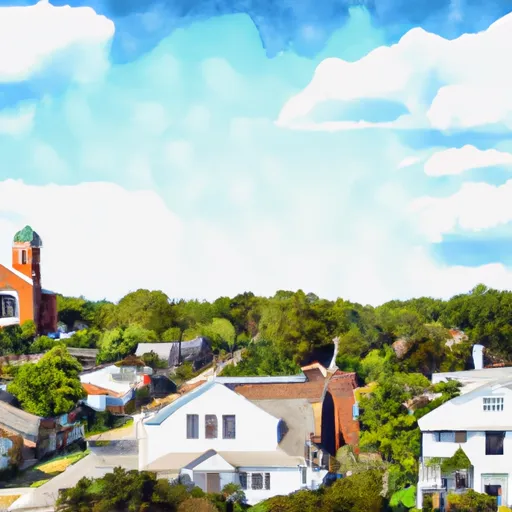-
 Snoflo Premium
Snoflo Premium
Get unlimited access to all our content
With no Ad interruptions! - Start Your Free Trial Login with existing account
Saint-Charles
Eden Index
Climate
8.3
•
Recreation
6.9
•
Community
3.9
•
Safeguard
6.7/10

Saint Charles, located in Charles County, Maryland, is a vibrant community known for its pleasant climate, diverse outdoor recreation opportunities, and stunning natural beauty. The region experiences a humid subtropical climate, with hot and humid summers and mild winters. Summers are perfect for outdoor activities, with temperatures averaging around 85°F, while winters are mild with temperatures averaging around 40°F.
Saint Charles is blessed with several hydrology constituents, including the beautiful Potomac River and Mattawoman Creek. These water bodies provide excellent opportunities for boating, fishing, and other water sports. The region is also home to numerous parks and trails, offering hiking, biking, and picnicking options. The Indian Head Rail Trail is a popular recreational trail that spans over 13 miles, providing a scenic route for walking, jogging, or cycling.
Outdoor enthusiasts can also explore the nearby Mallows Bay-Potomac River National Marine Sanctuary, which boasts a collection of historic shipwrecks and abundant wildlife. This sanctuary offers kayaking, paddleboarding, and birdwatching opportunities.
In conclusion, Saint Charles, Maryland, offers a delightful climate, abundant hydrology constituents, and a wide range of outdoor recreation options, making it an ideal destination for nature lovers and adventure seekers alike.
What is the Eden Index?
The Snoflo Eden Index serves as a comprehensive rating system for regions, evaluating their desirability through a holistic assessment of climate health, outdoor recreation opportunities, and natural disaster risk, acknowledging the profound impact of these factors on livability and well-being.
Climate Health Indicator (CHI): 8.3
Saint-Charles receives approximately
1131mm of rain per year,
with humidity levels near 80%
and air temperatures averaging around
14°C.
Saint-Charles has a plant hardyness factor of
7, meaning
plants and agriculture in this region tend to thrive during the non-winter months.
By considering the ideal temperature range, reliable water supplies, clean air, and stable seasonal rain or snowpacks, the Climate Health Indicator (CHI) underscores the significance of a healthy climate as the foundation for quality living.
A healthy climate is paramount for ensuring a high quality of life and livability in a region, fostering both physical well-being and environmental harmony. This can be characterized by ideal temperatures, reliable access to water supplies, clean air, and consistent seasonal rain or snowpacks.
Weather Forecast
Streamflow Conditions
Potomac
Area Rivers
Potomac
Snowpack Depths
Potomac
Reservoir Storage Capacity
Potomac
Groundwater Levels
Recreational Opportunity Index (ROI): 6.9
The Recreational Opportunity Index (ROI) recognizes the value of outdoor recreational options, such as parks, hiking trails, camping sites, and fishing spots, while acknowledging that climate plays a pivotal role in ensuring the comfort and consistency of these experiences.
Access to outdoor recreational opportunities, encompassing activities such as parks, hiking, camping, and fishing, is crucial for overall well-being, and the climate plays a pivotal role in enabling and enhancing these experiences, ensuring that individuals can engage in nature-based activities comfortably and consistently.
Camping Areas
| Campground | Campsites | Reservations | Toilets | Showers | Elevation |
|---|---|---|---|---|---|
| Greenbelt Park | 175 | 121 ft | |||
| Cedarville State Forest | 27 | 198 ft | |||
| Louise F. Cosca Regional Park | 23 | 223 ft | |||
| Andrews AFB Military | None | 269 ft |
Nearby Ski Areas
Catastrophe Safeguard Index (CSI):
The Catastrophe Safeguard Index (CSI) recognizes that natural disaster risk, encompassing floods, fires, hurricanes, and tornadoes, can drastically affect safety and the overall appeal of an area.
The level of natural disaster risk in a region significantly affects safety and the overall livability, with climate change amplifying these risks by potentially increasing the frequency and intensity of events like floods, fires, hurricanes, and tornadoes, thereby posing substantial challenges to community resilience and well-being.
Community Resilience Indicator (CRI): 3.9
The Community Resilience Indicator (CRI) recognizes that education, healthcare, and socioeconomics are crucial to the well-being of a region. The CRI acknowledges the profound impact of these elements on residents' overall quality of life. By evaluating educational resources, healthcare accessibility, and economic inclusivity, the index captures the essential aspects that contribute to a thriving community, fostering resident satisfaction, equity, and social cohesion.

